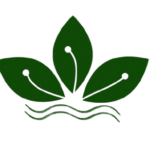Antiviral Activity of Characterized Extracts from Echinacea

Abstract
Extracts of 8 taxa of the genus Echinacea were found to have antiviral activity against Herpes simplex (HSV) virus Type I in vitro when exposed to visible and UV-A light. n-Hexane extracts of roots containing alkenes and amides were more active in general than ethyl acetate extracts containing caffeic acids. The most potent inhibitors of HSV were E. pallida var. sanguinea crude (70 % ethanol) inflorescence extract (MIC = 0.026 mg/mL), cichoric acid (MIC = 0.045 mg/mL) and Echinacea purpurea n-hexane root extract (MIC = 0.12 mg/mL).
Introduction
Echinacea preparations are common oral treatment for colds and flu, but they are also indicated for infections and topical conditions such as candidiasis, strep throat, Staphylococcus infections, infected wounds, skin ulcers and burns .Traditionally, roots were used by native healers for treatment of mouth sores, toothaches, sore throats, wounds and boils and upper respiratory tract infections . Mouth sores and infections of the oral cavity received the most frequent mention in ethnobotanical reports of Echinacea root use. Modern clinical research of Echinacea preparations from both roots and aerial parts rarely investigates direct topical effects. In one clinical study, adjuvant therapy with pressed juice of Echinacea purpurea aerial parts, in conjunction with topical econazole nitrate, showed a significant decrease in recurrence of gynaecological candidal mycoses from 60.5 % to between 5 – 16 % (Coeugniet and Kuhnast cited in. However, antimicrobial activity from topical application of ethanolic root extracts of Echinacea spp. remains to be determined.
Whole plant extracts of E. purpurea were shown in bioassays to protect cell lines against herpes, influenza and vesicular stomatitis viruses (VSV), possibly as a result of interferon induction in the treated experimental cell lines . In similar bioassays, three phenolic compounds from Echinacea were determined to be antiviral agents against VSV and E. purpurea root fractions containing glycoproteins had direct in vitro antiviral effects (inhibition of Herpes simplex viral plaques), and indirect effects (induction of interferon) . Other members of the Asteraceae have been shown to have potent antiviral activities, which are activated by light . The current study was therefore undertaken to determine the light-activated antiviral potential of root extracts of eight Echinacea species or varieties and an aerial extract of E. pallida var. sanguinea.
Materials and Methods
Plant material
Ripened achenes of Echinacea spp. were sterilized and stratified at 4 °C (5 μM/m2/s, incandescent, continuous light) for 14 d. Germinated plants were grown at 25 °C (20 μM/m2/s, incandescent, 16 h/d), in 5 : 5 : 2 Promix : vermiculite : sterile quartz sand (Industrial grade #10, 4 mm particles). Three accessions were tested at 7 months of age: wild E. laevigata (voucher label: EL98 – 0924, Virginia), cultivated E. purpurea (EP-COM2, Washington), and wild E. pallida var. pallida (EPA 0823, Missouri). The remaining seed accessions were tested at 5.5 months of age: cultivated E. pallida var. angustifolia (EA-COM1, Washington), wild E. atrorubens var. paradoxa (EPP0823, Missouri), and two wild accessions of E. pallida var. tennesseensis from Tennessee (ET98 – 0926; ET98 – 0611). Two wild in situ plant collections made in May, 1998 and stored as ethanolic extracts for 8 months at 4 °C were also tested: E. atrorubens var. atrorubens (EAT597602, Oklahoma) and wild E. pallida var. sanguinea (ESA98 – 0523 – 2F, Texas). All accessions were identified according to a recent taxonomic revision and voucher specimens were deposited in the Herbarium at Department of Agriculture, Ottawa, Canada (DAO).
Extraction and chromatography
Ethanolic (70 %) extracts (0.05 g dry wt/mL) were made for each accession, except the two in situ collections, using a rapid ultrasonic extraction method. Fractionated extracts were prepared as follows: approximately 10 washed, dried, bulk ground (40 mesh; Thomas-Wiley mill, Philadelphia) roots of five accessions (due to limited materials) were extracted in 70 % ethanol for 24 h under moderate mechanical agitation (70 rpm). These were fractionated three times with equal parts n-hexanes and distilled water, giving three n-hexane fractions (pooled into one) and three hydroalcoholic portions (pooled). The latter were fractionated twice with an equal volume of ethyl acetate (pooled), the second of which was adjusted to pH < 2.5 to maximize dissolution of cichoric acid (3). All fractions were concentrated at 30 °C in a rotary evaporator (n-hexanes not to dryness), redissolved in the appropriate fresh solvent to 0.05 g/mL by dry weight and filtered with nylon membranes (0.2 μm pore size) prior to HPLC separation.
Chromatography was achieved by HPLC using a solvent system of acetonitrile : water (6 : 4) at 1 mL/min and 5 μL injection on a 7.5 cm reverse phase C-18 column (3 μm particle size). Lipophilic compounds were detected at 210 nm and 260 nm. For peak identification, we used an internal reference standard of dodeca-2E,4E,8Z,10E/Z-tetraenoic acid isobutylamides 1 that was isolated in our laboratory. All compounds were identified using online UV spectra and relative retention times to (1), as previously reported in Bauer and Remiger.
assay
Vero cells (monkey kidney cell line, American Type Culture collection) were grown in Dulbecco’s Modified Eagle medium (MEM) containing 5 % fetal bovine serum (GIBCO Life Sciences, Ontario), in 96-well microtest trays (Falcon), with 0.1 mL well volume. Each Echinacea plant extract was diluted 1 : 20 in MEM and filtered (0.2 nm) through a sterile syringe, forming standardized starting materials equivalent to 25 mg/mL of extract in <2 % ethanol. Two-fold serial dilutions of the extracts were made in MEM without serum (100 μL into 100 μL MEM) across a row of wells in an empty 96-well microtest tray (in triplicate) by multipipettor. Then 100 μL of HSV type 1 (originally obtained from the BC Center for Disease Control, Vancouver, and subsequently grown in Vero cells) comprising 100 plaque-forming units (pfu) in MEM without serum was added to each well. Incubation and irradiation protocol followed Marles et al. A combination of UV-A and visible light was included in the incubations in case some antiviral compounds were photosensitizers , . There were two types of control cells: those with no virus and no plant extract, and those infected with virus, but without plant extract added. Characteristic cytopathic effects (cpe) caused by HSV were determined by periodic microscopic evaluations. Complete cell destruction (100 % viral cpe) required 4 days for infected control cells. In infected cells treated with plant extracts, the extract concentration required for complete inactivation of 100 pfu of HSV was averaged over three replicates (N = 3) to calculate minimum inhibitory concentration (MIC).
Discussion
The present study determined that Echinacea spp. root and inflorescence extracts, along with the pure compound cichoric acid (3), were capable of inhibiting the growth of Type I HSV in vitro when exposed to visible and UV-A light. Antiviral activity varied according to plant species and variety, as well as by phytochemical fraction of the crude extracts (Tables and 2). Overall, the most potent inhibitors of HSV were E. pallida var. sanguinea 70 % ethanol inflorescence extract (MIC = 0.026 mg/mL), cichoric acid (MIC = 0.045 mg/mL) and Echinacea purpurea n-hexane root extract (MIC = 0.12 mg/mL).
Reports of antiviral activity by the reference compound alpha-terthienyl (α-T) were within the inhibitory range (within 100 × activity level) of the Echinacea extracts and the pure compound cichoric acid tested in this study. In the same antiviral assay, α-T was effective against these mammalian viruses: HIV virus with MIC of 0.1 μg/mL, murine cytomegalovirus with MIC of 0.24 μg/mL, and Sindbis virus with MIC of 0.27 μg/mL. Furthermore, the MIC of the crude E. pallida var. sanguinea inflorescence extract indicated superior antiviral activity when compared to the MIC of pure cichoric acid (Table ), suggesting possible additive or synergistic effects due to phytochemical richness and diversity in Echinacea extracts (Table ). Crude plant extracts are often more potent viral inhibitors than single pure compounds , as evidenced by another ethanolic plant extract with anti-HSV effects in the same bioassay, the aerial parts of the West African phytomedicine Momordica charantia (Cucurbitaceae) (MIC = 0.002 – 0.115 mg/mL).
A complete phytochemical characterization of ethanolic extracts from all 10 taxa of Echinacea from wild and cultivated sources is available, and in the present study the ethanolic extracts containing phenolics, alkamides and ketoalken/ynes (Table) were used to compare antiviral activities across 8 Echinacea taxa. E. pallida var. sanguinea inflorescences, E. atrorubens var. atrorubens and E. pallida var. angustifolia extracts had MIC’s < 1 mg/mL, while the remaining were active in the range of 1 – 5 mg/mL. Since the ethanolic extracts contained multiple classes of phytochemicals, and no conclusive trends were observed, they were not very useful in suggesting which single compounds may have been responsible for antiviral activity. However, the two most active crude root extracts were those that had been stored for approximately 8 months (see Materials and Methods), during which time phytochemical degradation probably occurred, especially among phenolics.
Five of the ethanol extracts were fractionated yielding n-hexane and ethyl acetate extracts. Higher antiviral activities (i. e., lower MICs) were found almost consistently from n-hexane fractions with the exception of E. laevigata (Tables and 3). Moreover, the exceptionally high concentration of caffeic acid derivatives (7.68 %) may be responsible for the superior antiviral activity of the 70 % ethanolic inflorescence extract when compared to all root extracts (Tables and 2). One component of this extract with known antiviral activity is cichoric acid (3), as first reported by Cheminat et al.. Here, cichoric acid (3) was highest in E. pallida var. sanguinea inflorescences (6.37 %). Although, the same inflorescence extract also had a high concentration of pentadeca-8Z,13Z-dien-11-yn-2-one (2), and a better than average concentration of 1, which may have added to its antiviral potency.
The mode of antiviral action for phenolic compounds may be linked to their reported cytoprotective actions. Studies with pure cichoric acid (3) and 3,5-dicaffeoylquinic acid (related to the Echinacea compound 3,5-O-dicaffeoylquinic acid or cynarin) demonstrated inhibition of HIV-1 integrase and HIV-1 replication in tissue culture. Cichoric acid (3) also protected against collagen degradation by free radical scavengers. Furthermore, related compounds, caffeic acid and chlorogenic acid were time-dependent antioxidants of low-density lipoprotein and antimutagenic in a Salmonella typhimurium system . Cytoprotective actions of caffeic acid derivatives may be dose-dependent, as since they were slightly cytotoxic to host cells at levels 100 fold greater than antiviral concentrations. Cheminat et al. suggested that interactions with DNA metabolism may result in cichoric acid’s cytotoxic effects.
The mechanism of HSV inhibition by n-hexane fractions of Echinacea spp. extracts presented here may be similar to that of the phototoxic polyacetylene, phenylheptatriyne (PHT), which is also known to inactivate membrane-bound herpes viruses at concentrations as low as 0.1 nM . As well, it is isolated from Bidens pilosa, another member of the Asteraceae. In our study ketoalkene/ynes (structurally-related to PHT) were present in high quantity in those extracts with superior antiviral activity (Tablesand 2). Photo-activation may also play a role in HSV inhibition by Echinacea, as evidenced by the lack of antiviral activity when E. pallida var. angustifolia aqueous root extracts were tested against HSV in the absence of light .
Our findings support the evidence for antiviral activity of phenolic compounds in Echinacea spp., and they suggest a novel antiviral activity associated with lipophilic constituents in vitro. More pure compounds from Echinacea spp. are under investigation as potential inhibitors in the current HSV-1 bioassay, and should be tested in other bioassay systems. In similar future studies, special attention should be paid to variables affecting plant extracts, such as plant parts, germplasm source, cultivation and processing conditions. The current study implies the possibility of topical clinical antiviral activity that is worthy of further investigation with Echinacea phytomedicines.

 کود
کود
 سم
سم
 سایر محصولات
سایر محصولات
